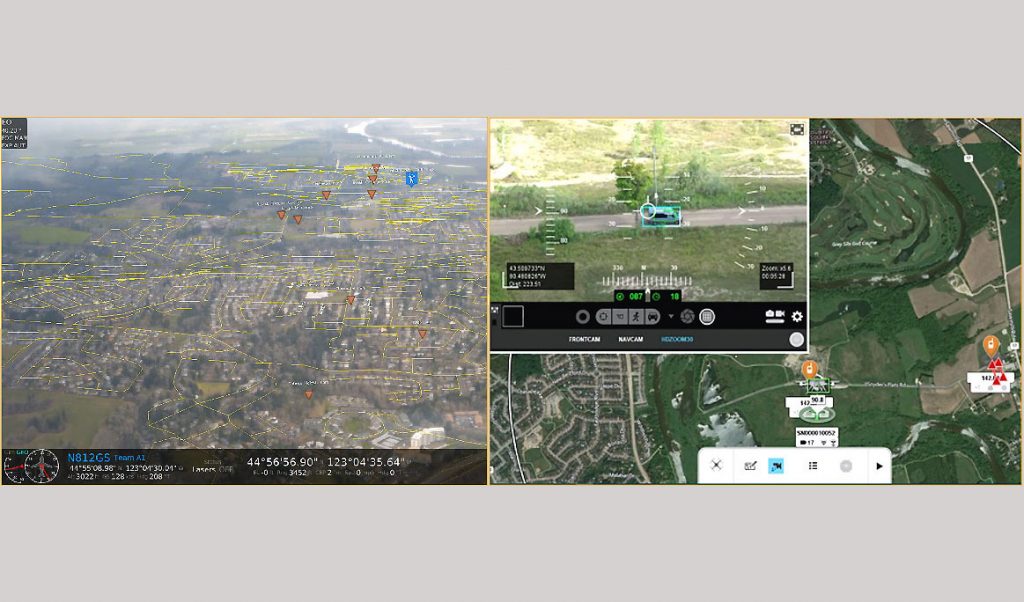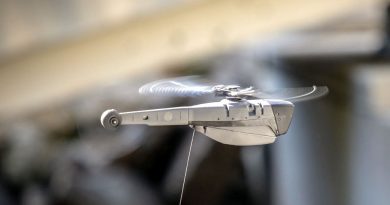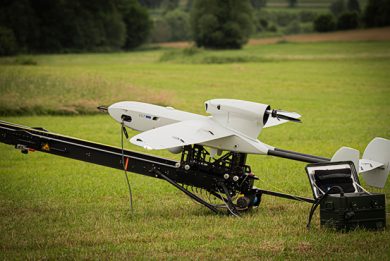
From the sky
Coming to UAS, it was the turn of David Proulx, VP of Product Management for Unmanned Systems & Integrated Solutions, to illustrate the path FLIR is looking at in order to provide forces with right tools for MDOs. “When robotic elements will move into contact, the idea of identifying threats is not limited to things that can be touched, in many cases that first contact is going to be outside of the visible spectrum and will take place either electronically or in the CBRN or other hazardous materiel domain,” he says, and making a comparison between the human being out on reconnaissance, who uses all his senses to pick up hints of enemy presence, the aim is to have robotic assets sensing in all domains relevant to the mission environment.
“Our customers do not want anymore a robot with one sensor, so it is not anymore a question of ‘or’ but it is a question of ‘and’,” he states. Future robotic elements will thus need to operate across the optical domain, in the visible and the IR spectrums, in real time, in the CBRN domain, both at stand-off as well as when interacting at short distance with the specific threat, and finally in the electromagnetic spectrum (EM) domain, which will be more and more contested, aiming at understanding and defeating enemy countermeasures also ensuring that friendly forces can continue exploiting the EM spectrum at their advantage, these being the three primary sensing of future robots. Overloading operators with data remains a problem.
“Too much data exacerbate the problem of trying to identify and mitigate threats, so across our portfolio we are trying to process information, fusing or synthesising them together, and using metadata to provide real time, actionable intelligence to the end user,” Proulx concludes, this being true for big or small systems, either air or ground.



